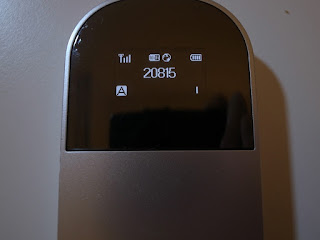My friends and colleagues sometimes ask me how to distinguish between Japanese-owned restaurants and those owned by other people but claimed as Japanese restaurants. As a Japanese native, I can quickly open the door of a restaurant and begin a Japanese conversation to tell whether it is owned by a Japanese or not, but for those who don't speak Japanese, this should be quite challenging. So, here are 10 ways to tell whether a restaurant in front of you is a Japanese-owned or not.

1. Restaurant names with Japanese cities such as Tokyo, Kyoto or Osaka.
If you see a restaurant named after Japanese city names such as "Tokyo Sushi" or "Restaurant Osaka", that is most likely not operated by Japanese people. We know that such city names are famous, but Japanese people tend to pick up less familiar words.

2. Ornaments characteristic of Japanese traditions and cultures
I have observed so-called Japanese restaurants decorated with cherry blossoms, red lanterns, kimonos, traditional female dolls and other ornaments inside and outside. However, at such restaurant, when I hear conversation of owners and workers who don't speak Japanese, I cannot expect authentic Japanese dishes.
3. Paintings with black, red, white and gold
Typically, black, red, and white colors are used by non-Japanese owned Japanese restaurants. Chinese people love the color of red and gold. Japanese people tend to choose less flashy colors.

4. Chopsticks placed vertically
Japanese people put chopsticks in a horizontal manner. In some new and hippy restaurants owned by younger Japanese people, they may arrange chopstick placement differently, such as in a diagonal direction. However, even today, Japanese people still tend to avoid placing chopsticks vertically.
5. Long and thick chopsticks
I heard that the reason why Japanese chopsticks have pointing edges was that it would make it easier to pick up fish meat, which is Japanese people's traditional favorite ingredient. Chinese people, on the other hand, tend to use longer chopsticks in order to pick up items on plates placed far away from each other on a round table. So, restaurants which use longer and thicker chopsticks may be owned by non-Japanese people.

6. Menus with shrimp dumplings and lychees
These are typically found in Chinese restaurants.
7. The restaurant is next to another Chinese or Korean restaurant
In such a case, it's most likely that the same owner operates both restaurants.
8. Restaurant names with wrong spelling
Some restaurants may have wrong spelling of Japanese words that cannot be found in a dictionary. In the past, I have seen restaurant names such as "Yamado" which is supposed to be Yamato.
9. Mixture of other Asian cuisines
In Japan, restaurants are dedicated to limited menus. Sushi restaurants serve sushi only and ramen restaurants serve ramen only. Outside of Japan, Japanese owners of Japanese restaurants may mix menus with sushi, and other dishes, meeting expectations of local people, but they arrange their menus within the range of Japanese traditional dishes, and never serve menus from Chinese or Vietnamese. So, if you see a Japanese restaurant which mixes Chinese and other Asian dishes, it's a sign that it's not owned by a Japanese owner.
10. They don't greet with Japanese words
If you enter the restaurant and hear "Irasshaimase (いらっしゃいませ)" or "Konbanwa (こんばんは)", there is a high chance that Japanese employees are working there, and the restaurant is owned by a Japanese. However, this last item may require some skills of Japanese listening comprehension, and this may be not as useful as the above items.
Well, as a matter of fact, thanks to the efforts of non-Japanese restaurant owners who opened their Japanese restaurants, we are now able to enjoy Japanese dishes worldwide. And their quality is now dramatically improving. So, I personally appreciate their efforts to open such restaurants.


